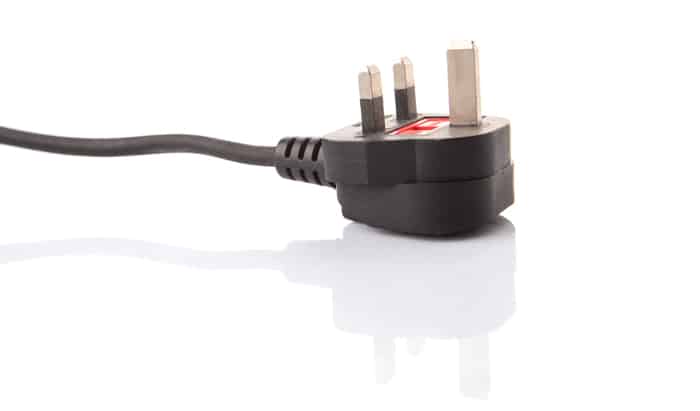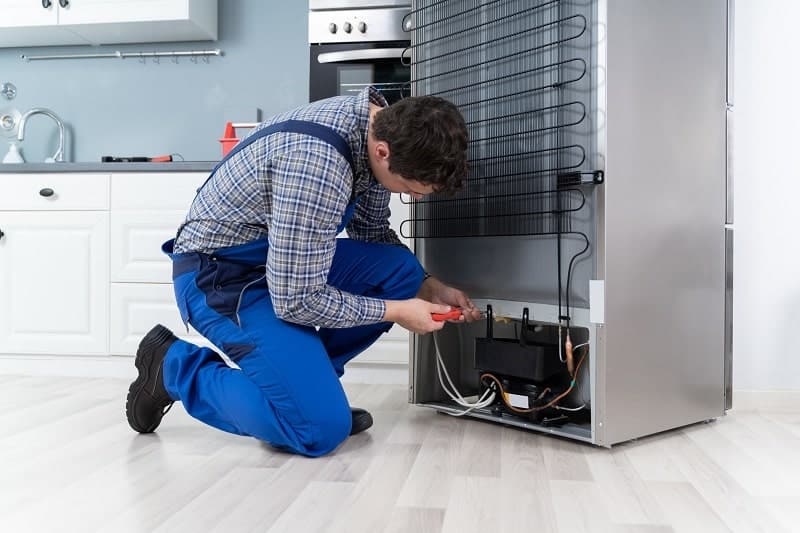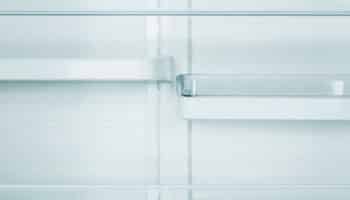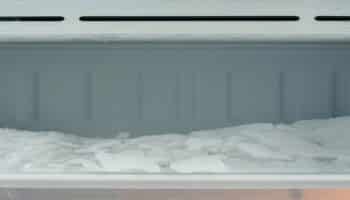We've independently reviewed this article to make sure it's as accurate as we can make it.
To find out more about our article creation and review process, check out our editorial guidelines.
Are you trying to figure out how to convert your freezer into a fridge?
You’ve come to the right place for answers! There is a way you can turn your standalone freezer into a fridge so that you can get even more space for your food or drinks. Even if you don’t have any background experience with appliances, the process is pretty simple.
To convert a freezer into a refrigerator, you need to purchase a refrigerator thermostat and install it in place of your freezer thermostat. By changing the thermostat within the appliance, you can adapt the freezer to operate at refrigerator-like temperatures.
Ready to get even more fridge space in your home? Then let’s dive straight in.
Convert A Freezer Into A Fridge: 4 Simple Steps
Converting your freezer into a fridge doesn’t actually take that much work. You just have to know what you’re doing and have the right equipment.
The total time taken shouldn’t be more than 30 to 45 minutes. Follow these simple steps to do it:
#1 Turn Off and Unplug Your Freezer
First, you want to make sure there isn’t any power going into your freezer. You’ll be messing with some electrical wires in the appliance, and having the unit on would cause significant harm.

Don’t just make sure your freezer is turned off, but completely unplug it from the outlet.
You shouldn’t have any items in your freezer if you are about to convert them, but just in case, put them someplace temperature regulated.
Once your freezer is off and unplugged, you can start work on the thermostat.
#2 Remove Existing Thermostat
The only real difference causing the temperature changes in a fridge and freezer is the thermostats. They regulate the temperatures inside the units, so by switching out the freezer thermostat for a fridge, you can convert the entire appliance.
Before converting your freezer, it’s important to note that this method may only be effective for units with manual cold controls. There may also be some issues with the defrost components due to temperature variations.
The thermostat is more than likely going to be located at the back of the freezer. Once you find it, go ahead and take a picture of it with your phone. Make sure you get all the positions of the wires.
You want to document exactly how the freezer thermostat was installed, so you can mimic it with your fridge thermostat.
Carefully remove the capillary wire and all other connections from the freezer thermostat.
If the thermostat is working properly, you could potentially resell it online or to a local appliance store.
Once the freezer thermostat is taken out, you can connect to your fridge thermostat.
#3 Connect Your Fridge Thermostat
Using the picture you took with your phone, start connecting the fridge thermostat.
You’ll want to start with the capillary tube, which is extremely fragile. Any bend or kink in it could cause the thermostat to stop working.
The capillary tube is a thin, light-colored tube running behind the freezer thermostat. It is responsible for delivering coolant to the fridge thermostat and should easily snap into place.
Once that piece is in place, you’ll be able to connect the other wires on your thermostat without issue. Just follow your picture for guidance on what is where.
Bear in mind that wire colors may vary depending on the unit’s model or schematic. Green wire is almost always ground, and white is usually neutral. Yellow can be a hot wire, which may cause the breaker to trip if it touches metal.
Once you’ve connected the wires, please place the thermostat back into the old freezer housing area where you pulled it out and put the adjustment dial back on, so you can regulate the temps externally if you need to.
#4 Turn On Your Fridge
Once you’ve followed all the steps above, you can turn your new fridge back on. It might take some adjusting of the temperature to get the settings just right.
Otherwise, your new fridge should work just as well as the freezer did, but with higher temps.

If you’re having any trouble getting everything to work smoothly, you may need to call a technician.
More than likely, there was something not connected right when you installed the thermostat. Instead of risking possible injury to yourself or damage to your fridge, call a professional. They’ll be able to take a look and let you know if it was an installation issue or maybe there is something bigger at work.
FAQ
Are There Other Ways to Convert a Freezer Into a Fridge?
The plug-in thermostat is the easiest way to convert your freezer into a fridge, but there are also other ways to do it.
Buying a freezer to refrigerator conversion kit is a possible solution if you can’t get a hole in a plug-in thermostat. These kits will have a temperature probe, refrigerator thermostat, mounting bracket, and spare connectors.
This kit would involve a little more experience and know-how to convert your freezer into a fridge. The good news is that most sellers will offer step-by-step instructions to go with the kit so you can have an idea of how to do it yourself.
Does Converting a Freezer Into a Fridge Save Electricity?
The biggest reason people want to convert their freezers into fridges is to save money.
When you open the door and look at a fridge compared to your freezer, you’ll notice just how much more insulation there is inside your freezer. All of this extra insulation means the temperature regulates much better and the compressor doesn’t need to turn on as much.
When a compression keeps turning on and off, it uses up the most energy possible. By having more insulation, you don’t need your compressor to keep running.
This will save you a bunch of money every year in electricity bills because your new fridge won’t need to run nearly as much as your old one did.
Don’t forget that you can also save money by doing regular maintenance.
What Do You Use Two Fridges For?
Most people want two fridges so they can store more items in their homes.
Usually, large families need this ability because there are a lot of mouths to feed and not enough space. Having a second fridge helps to keep food fresh for everyone.
Another reason to use a second fridge is to separate your food items from your drink items. This makes it a lot easier for the organization in your home and knowing exactly where everything is.
Many small businesses also use a second fridge in order to cut costs on energy bills while also providing more space.
If you are worried about certain foods coming in contact with others, you could keep all your raw meats in one fridge and all your processed items in another. This will keep your food from coming in contact with each other.
Can You Revert a Fridge Back Into a Freezer?
The same way you converted your freezer into a fridge allows you to reverse the process.
You can always go back to your freezer if you get tired of your second fridge or no longer have a use for it.
You will need to purchase another freezer thermostat if you get rid of your old one. Then, just install it the same way you did with the refrigerator thermostat.
Should You Convert a Standup or Chest Freezer Into a Fridge?
Both options will work well for converting into a fridge, but one is slightly better than the other.
The chest freezer is actually the best option to turn into a fridge. What happens is that cold air tends to sink and stay lower on the ground.
When you open a chest freezer, even after converting it into a fridge, the cold air stays at the bottom. This keeps most of the temperature regulated even after you open the door. That means less energy is used, and more money is saved on utilities.
The stand-up freezer works fine, but it will let out a significant amount of cold air when opened compared to a chest freezer.
Conclusion
That about covers it!
Remember, you can easily convert your own freezer into a fridge using a refrigerator thermostat. Once you install the new thermostat, you can regulate temperatures normally without an issue.
Thanks for reading! If you found this guide helpful, please take a look at the different articles below.






